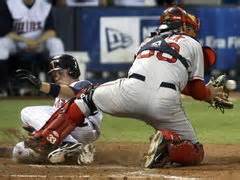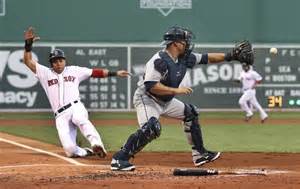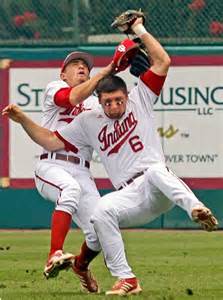Coaching Youth Baseball - Teaching
Coaching Youth Baseball today is quite a bit different from the “Old Days” as far as technology offering different approaches, but it doesn’t matter if you’re in a batting cage, or being thrown to by a human pitcher, being analyzed by a computer program or being observed by an experienced coach, improved results is still the name of the game.
I realize instant video reviewing, such as that used by professional and college football, or utilizing computer programs, such as many pro scouts do now, is the modern method for teaching and coaching.
However, number One, I know of no coach who can afford these types of training methods, and number Two, most new methods are based on old methods of coaching.

Coaching Youth Baseball
I had a minor league coach who mastered the ability of teaching players the game of baseball through photos and slides. He’d hold a class, showing slides from an overhead projector, depicting frozen action shots of a baseball play, from which the players were quizzed.
His philosophy was, if players are challenged to analyze a photo and describe what is, isn't or should be occurring, it not only expands their knowledge of that particular scenario, but teaches each player how other position players are thinking.
As the old saying goes “A picture is worth a 1000 words,” and a picture illustrating how to hold a particular pitch you are trying to learn, how to hold your bat, fielding position and on and on, are very informative and relatively easy to understand, which fulfills the requirements of learning the basics.
From that point you learn how to apply pressure to the seams, throwing the knob at the ball or stopping forward momentum, refining the specifics. we’re going to push our learning to the next level, analyze photos and determine if the players in the picture were performing their tasks correctly or not.
Being able to determine what’s Wrong is just a backdoor method of learning what’s right.
This is obviously a play of a runner sliding into second base in an attempted steal. What is wrong here, if anything?
Ask yourself why would the shortstop and second baseman both be covering second base? Maybe.
(1.) The Catcher may have signaled “Pitch-Out” although rare at this age.
OR
(2.) It could have been a delayed steal, which both defenders go to the base.
OR
(3.) The catcher originally muffed the ball giving the runner a chance to run.
But … in all likely hood the two players messed up. They failed to communicate with one another on who would cover on a steal attempt and this failure to communicate resulted the entire middle part of the infield being uncovered, which any ball hit through these openings would result in a base hit and a runner advancing to third base.
Catcher - Play at the Plate and Coaching Youth Baseball
What’s wrong with this picture? Actually … Nothing. This Catcher has been well coached and is properly utilizing the tools he’s been taught.
Notice the catcher is in full equipment, including mask, which affords him much more protection than the runner has. He is holding the baseball firmly with two hands, his left leg is extended, blocking the plate and his left shoulder is dipped preparing to absorb the impact of the impending collision.
Clickbank Products
What’s Happening in this Photo ? and Coaching Youth Baseball
Most Likely Scenario:
(1.) Bases were loaded with 1 out. Why that Assumption?
The 3rd baseman has tagged third base, resulting in a force out, out 2, and is throwing to first to complete the inning ending double play.
Had there been 0 outs, the 3rd baseman would have touched third base, for the force out, out 1, then thrown home, where the catcher would have tagged the runner out before scoring.
What else do we know?
The 3rd baseman has either muffed the catch and is recouping to make the play
OR
He received a throw from either the pitcher or the catcher in order to force the lead runner out and hopefully complete the double play.
Notice how close the runners, who are advancing, are to second and third base. Had the third baseman fielded a sharply hit ball, the runners would not be so far advanced, with the exception of a possible double steal attempt.

Home to First Double Play -
Coaching Youth Baseball
This picture shows a catcher catching a foul ball pop fly behind the plate. What appears to be a good play, where the player is giving a 110% effort to make the catch, is actually a near Blunder on part of the catcher.
When a baseball is hit resulting in a high fly ball foul behind the plate, the catcher must remember as the ball begins to come down it will fade towards the field of play.
This catcher tracked the ball and stood directly underneath it as it fell, and because he forgot the ball would tail back towards the infield, he nearly missed the ball.
He wasn’t the only player making a mistake. No matter if a player call the ball or not, there should have been another fielder in the vicinity to assist in case something, like misjudging the ball, would occur.
What’s Wrong with this Picture? and Coaching Youth baseball
How about everything, except it appears the ball was caught.
(1.) By the photo it’s impossible to know which side of the field this play occurs on, but it involves an infielder and an outfielder.
(2.) The Infielder has drifted backwards into the shallow outfield tracking a fly ball with the intentions of catching it.
(3.) The outfielder moved in from his normal position into the shallow outfield to catch the fly ball.
(4.) Because there is a collision between the two players one of two probable issues occurred:

Coaching Youth Baseball - No Communication
A. The Infielder did not yield for the Outfielder to make the catch …. The Outfielder always takes precedence in catching a fly ball which they are coming in to catch the ball, while the infielder is going out.
B. The Outfielder Failed to Call for the ball, therefore the infielder continued his attempt to field the ball.
Notice the CWS (college World Series) sign on the outfield wall padding. These are not little kids making these mistakes.
Communication between players, whether infield or outfield, is important in order to avoid the pictured collision, which could end in injury for one or both players, and at the very least turn an easy out into a single, double or triple.
This is but a few examples of this photo coaching technique, and you can use whatever examples or methods you desire, but it does work.
Coaching Youth Baseball back to Coaching Baseball

New! Comments
Have your say about what you just read! Leave me a comment in the box below.